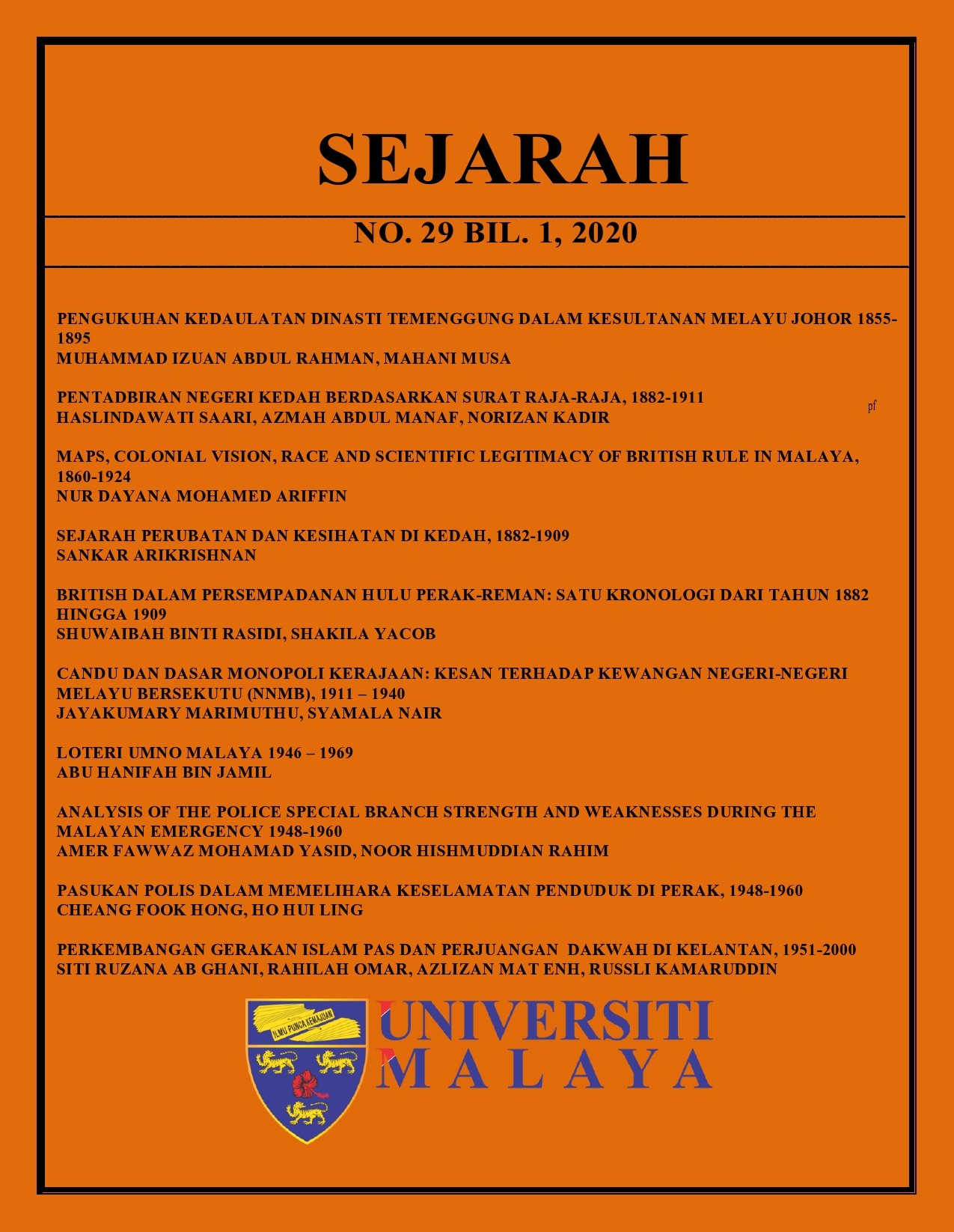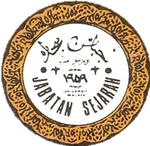PASUKAN POLIS DALAM MEMELIHARA KESELAMATAN PENDUDUK DI PERAK, 1948-1960
DOI:
https://doi.org/10.22452/sejarah.vol29no1.9Keywords:
Polis, Komunis, Perak, Darurat, Tanah MelayuAbstract
During the emergency period from 1948 to 1960, the police force in Malaya worked tirelessly in the fight against communist in order to maintain security. As a result, the burden and responsibility of the police force increased during the emergency as it was responsible for combating communist armed movements at the same time. Before the emergency, the police concentrated their focus in solving crimes that occurred in Malaya. To face the threat of communism and communist sympathizers in Tanah Melayu including Perak, the government has taken steps to expand the power of the police force with the establishment of various branches and units of the police force at the beginning of the emergency. Branches and units set up by the police force to combat the threat of communism in Malaya, including Perak such as Special Constables, Auxiliary Police, Home Guard, Police Women, Special Branch, Flying Squad, Jungle Squad, Jungle Company, Police Field Force and Senoi Praaq. Police forces were stationed inthe Perak area. The presence of the police force not only protects the safety of the people, but also prevents the villagers from passing information on the movement of the police force, food supplies and medicines to the communists. In addition, police forces were also deployed to the estates and mines to counter communist attacks in Perak. Rail transport safety is also the responsibility of the police force. Security operations were also carried out by police forces in the inland area and forests of Perak to clear the communist hideout. This article examines the extent of the involvement of police forces in safeguarding the safety of Perak residents in the emergency period (1948-1960). Therefore, the purpose of this article aims to discuss the task undertaken by the police force to protect the people of Perak from communist threats. This article is completed using qualitative and quantitative library research methods. Interview methods are also used to complete this paper. The article is written based on primary and secondary sources from National Archives of Malaysia, University of Malaya Library and Royal Malaysia Police Headquarter.
Received: 12 December 2019
Reviewed: 12 December 2019
Accepted: 10 May 2020


